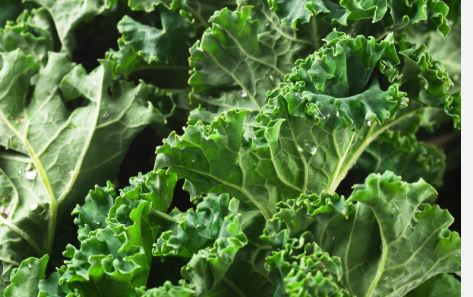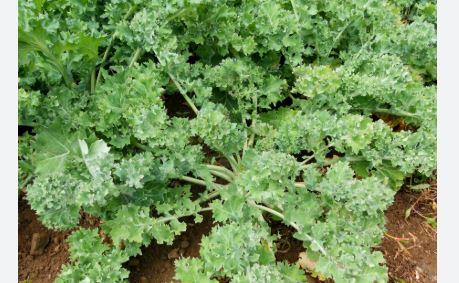
Botanical Classification
Siberian kale, scientifically classified as Brassica napus var. pabularia, belongs to the Brassicaceae family, which includes cruciferous vegetables such as cabbage, broccoli, and rapeseed. Unlike many kale varieties classified under Brassica oleracea (e.g., curly or Lacinato kale), Siberian kale is derived from the Brassica napus species, closely related to Red Russian kale and rutabaga.
The pabularia variety denotes its use as a leafy green, cultivated for its tender, edible foliage rather than forming a head. Its botanical lineage connects it to wild brassicas native to Europe and Asia, selected for their cold tolerance and nutritional value.
Origin and History
Siberian kale likely originated in the cold climates of Siberia and northern Europe, where its extreme frost tolerance made it a vital food source for centuries. It was cultivated in Russia and neighboring regions as a hardy winter green, capable of surviving harsh conditions. By the 19th century, it spread to North America through European settlers, gaining popularity in cold-climate regions like Canada and Alaska.
Its name reflects its adaptation to Siberian winters, though it’s also known as “Napus kale” or “Russian kale” in some contexts. Today, it’s grown globally, including in Ecuador’s highlands, where cool temperatures and fertile volcanic soil support its cultivation for local and export markets, driven by the health food movement.
Identifying Characteristics

Siberian kale is characterized by its large, frilly, gray-green to blue-green leaves with wavy, deeply lobed edges, resembling a softer version of curly kale. The leaves grow in a loose rosette, reaching up to 2-3 feet tall, with tender, slightly ruffled textures compared to tougher kales.
Stems are pale green to purplish, edible when young, and the plant’s foliage often develops a waxy coating that enhances its cold resistance. Its robust, upright growth and frost-hardy nature make it both a practical crop and an attractive addition to winter gardens, distinguishing it from less resilient kale varieties.
Taste
Siberian kale offers a mild, sweet flavor with a subtle peppery undertone, less bitter than curly kale and comparable to Red Russian kale. Its tender leaves have a crisp, slightly nutty taste when raw, making them ideal for salads without heavy massaging. Cooking, such as steaming or sautéing, enhances its sweetness, yielding a soft, spinach-like texture and earthy flavor.
Light frosts significantly improve its taste by converting starches to sugars, a trait that makes it a prized winter crop for both raw and cooked applications.
Seasons/Availability
Siberian kale is a cool-season crop, thriving in temperatures between 7-24°C (45-75°F), with exceptional frost tolerance down to -18°C (0°F). In the USA, it’s planted in early spring (February-March) or late summer (July-August), maturing in 50-70 days, and is typically available from late spring (April-May) through early winter (November-December).
It grows well in USDA zones 2-11, with significant production in California, Oregon, and colder states like Alaska and Minnesota. Peak flavor occurs in fall and winter after frosts, and it’s harvested year-round in milder climates like coastal California. Siberian kale is available fresh in farmers’ markets, specialty stores, and some supermarkets, with limited year-round supply as mature or baby leaves.
Culinary Uses
Siberian kale’s tender texture and mild flavor make it highly versatile in American kitchens. Raw, its leaves are used in salads, paired with citrus dressings, fruits, or nuts to complement its subtle bitterness, requiring minimal preparation. It’s a popular addition to smoothies, blending seamlessly for a nutrient boost.
Cooked, it shines in soups, stews, or stir-fries, retaining its texture when sautéed with garlic or olive oil. Siberian kale can be baked into crispy chips or incorporated into casseroles, and its young stems add crunch to dishes, offering zero-waste potential in hearty, winter-focused recipes across the U.S.
Nutritional Value
Siberian kale is a nutritional powerhouse, low in calories (about 30-35 per cup raw) and rich in vitamins, minerals, and antioxidants. It’s an excellent source of vitamins K, A, and C, providing over 100% of daily needs per serving, supporting blood clotting, vision, and immune function.
It contains 2-3 grams of fiber per cup, aiding digestion, and is high in calcium, iron, and magnesium for bone and blood health. Antioxidants like quercetin, kaempferol, and glucosinolates offer anti-inflammatory and potential cancer-preventive benefits. Siberian kale also provides folate and omega-3 fatty acids, making it a valuable component of plant-based, health-conscious diets in the USA.
Cultivation of Siberian Kale
- Climate and Season: Siberian kale thrives in cool weather, with optimal temperatures between 7-24°C (45-75°F), and tolerates frosts down to -18°C (0°F). Plant in early spring (February-March) or late summer (July-August) for spring and fall harvests. It grows in USDA zones 2-11, with year-round cultivation in mild areas like coastal California and peak winter harvests in colder states like Alaska or Minnesota.
- Site Selection: Select a site with full sun (6-8 hours daily) for vibrant leaf growth, though partial shade is tolerated in warmer states like Florida or Texas to prevent bolting. Ensure good air circulation to minimize fungal diseases, especially in humid areas like the Southeast.
- Soil Requirements: Prefers fertile, well-drained, loamy soil with a pH of 6.0-7.5. Enrich with organic matter like compost or aged manure. In regions with clay soils (e.g., Midwest) or sandy soils (e.g., Southeast), amend with compost to improve drainage and fertility for tender foliage.
- Soil Preparation: Loosen soil to 12 inches deep, mixing in 2-3 inches of compost or organic matter. Remove rocks and debris to promote root development. Conduct a soil test through local extension services (e.g., USDA’s NRCS) to confirm pH and nutrient levels, adjusting with lime or sulfur as needed.
- Planting: Sow seeds ¼-½ inch deep, spacing 12-18 inches apart in rows 18-24 inches apart to accommodate its 2-3 foot height. Transplant seedlings started indoors 6-8 weeks earlier for faster growth, common in shorter-season areas like the Northeast. Direct sowing works well in milder regions like California.
- Watering: Maintain consistent soil moisture, providing 1-1.5 inches of water weekly, adjusting for rainfall. Use drip irrigation, popular in arid states like Arizona, to keep leaves dry and reduce disease risk. Mulch to retain moisture, especially in hot, dry regions like the Southwest.
- Fertilization: Apply a balanced fertilizer (e.g., 10-10-10) at planting, followed by a nitrogen-rich fertilizer (e.g., fish emulsion) every 4-6 weeks to encourage leafy growth. Avoid over-fertilizing, which can attract pests in humid areas like the Gulf Coast and affect flavor quality.
- Mulching: Add a 2-3 inch layer of organic mulch, such as straw or wood chips, to conserve moisture, suppress weeds, and keep roots cool. This is critical in regions with temperature swings, like the Midwest, or hot summers, like the Southeast, to stabilize soil conditions.
- Pest Management: Monitor for pests like aphids, cabbage worms, and flea beetles, common in U.S. brassica crops. Use floating row covers in organic farms (e.g., Oregon), neem oil, or introduce beneficial insects like ladybugs, popular in California. Hand-pick caterpillars for small gardens, effective nationwide.
- Disease Control: Prevent fungal diseases like powdery mildew and downy mildew, prevalent in humid regions like the Southeast, by ensuring air circulation and avoiding overhead watering. Rotate crops every 2-3 years, standard in intensive farming states like California, to reduce soil-borne pathogens.
- Harvesting: Harvest outer leaves when 6-8 inches long, about 50-70 days after planting, cutting close to the stem to encourage regrowth. Start in late spring (April-May) or fall (September-November), with sweeter leaves post-frost in colder states like Minnesota. Regular harvesting promotes continuous leaf production.
- Succession Planting: Sow seeds every 2-3 weeks in spring or fall for a steady supply, a common practice in mild climates like California’s Central Valley. In shorter-season regions like Wisconsin, focus on spring and late summer plantings to maximize harvests before hard freezes.
- Storage and Preservation: Store fresh Siberian kale at 0-4°C (32-40°F) in a perforated plastic bag in the refrigerator for up to 2-3 weeks, standard for U.S. households. For long-term storage, blanch leaves for 2-3 minutes, cool in ice water, dry thoroughly, and freeze to preserve nutrients. Wash and dry before storing to maintain freshness.